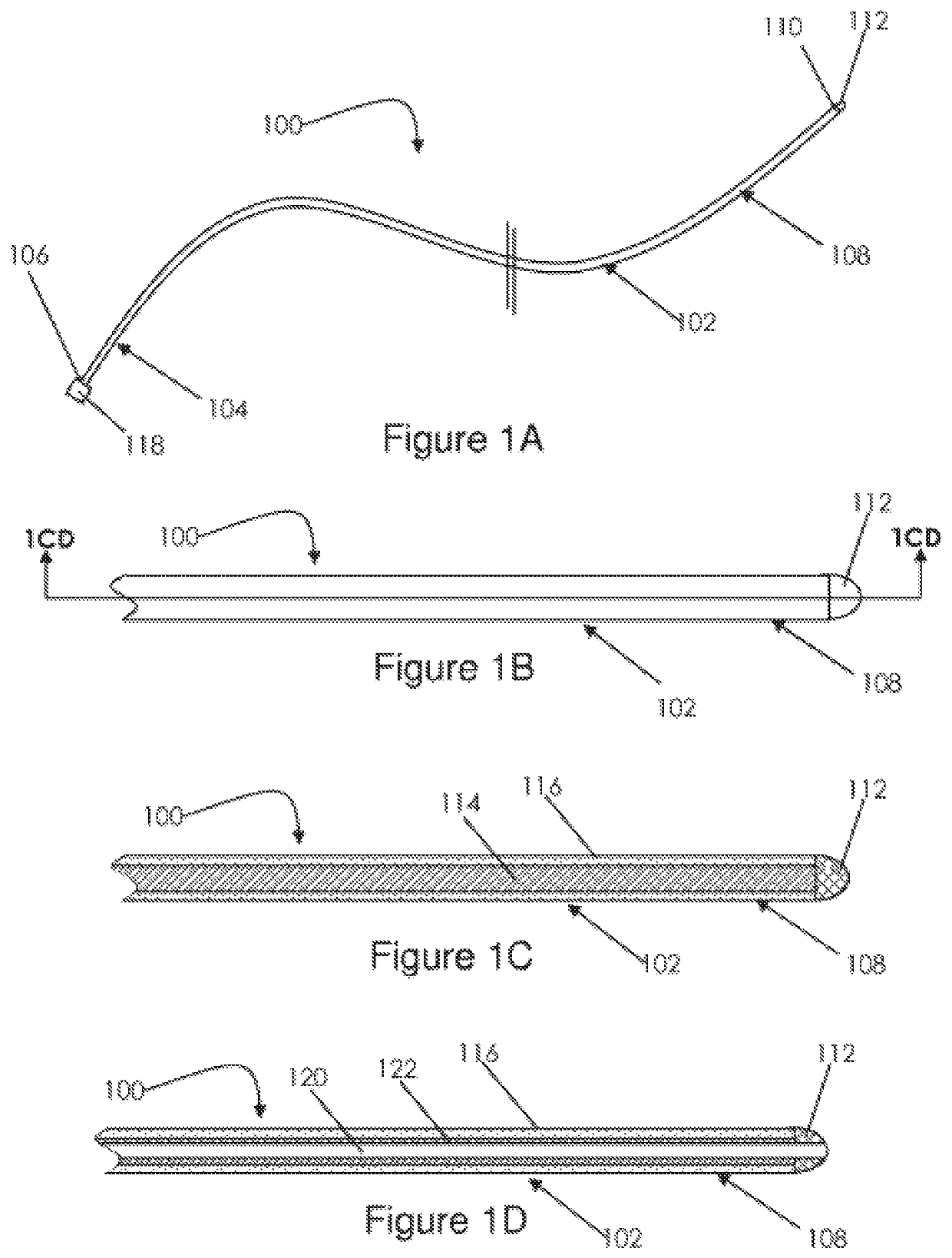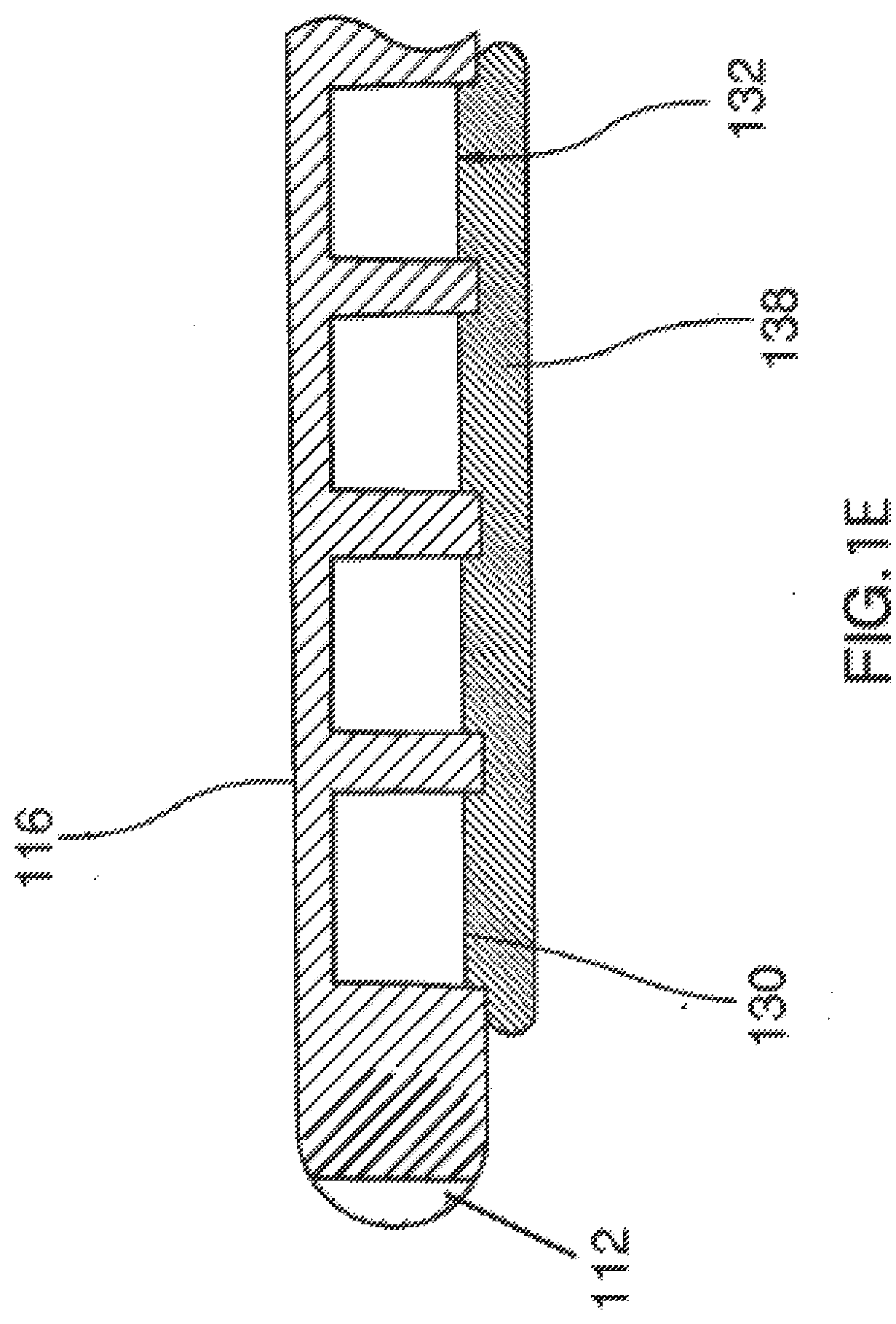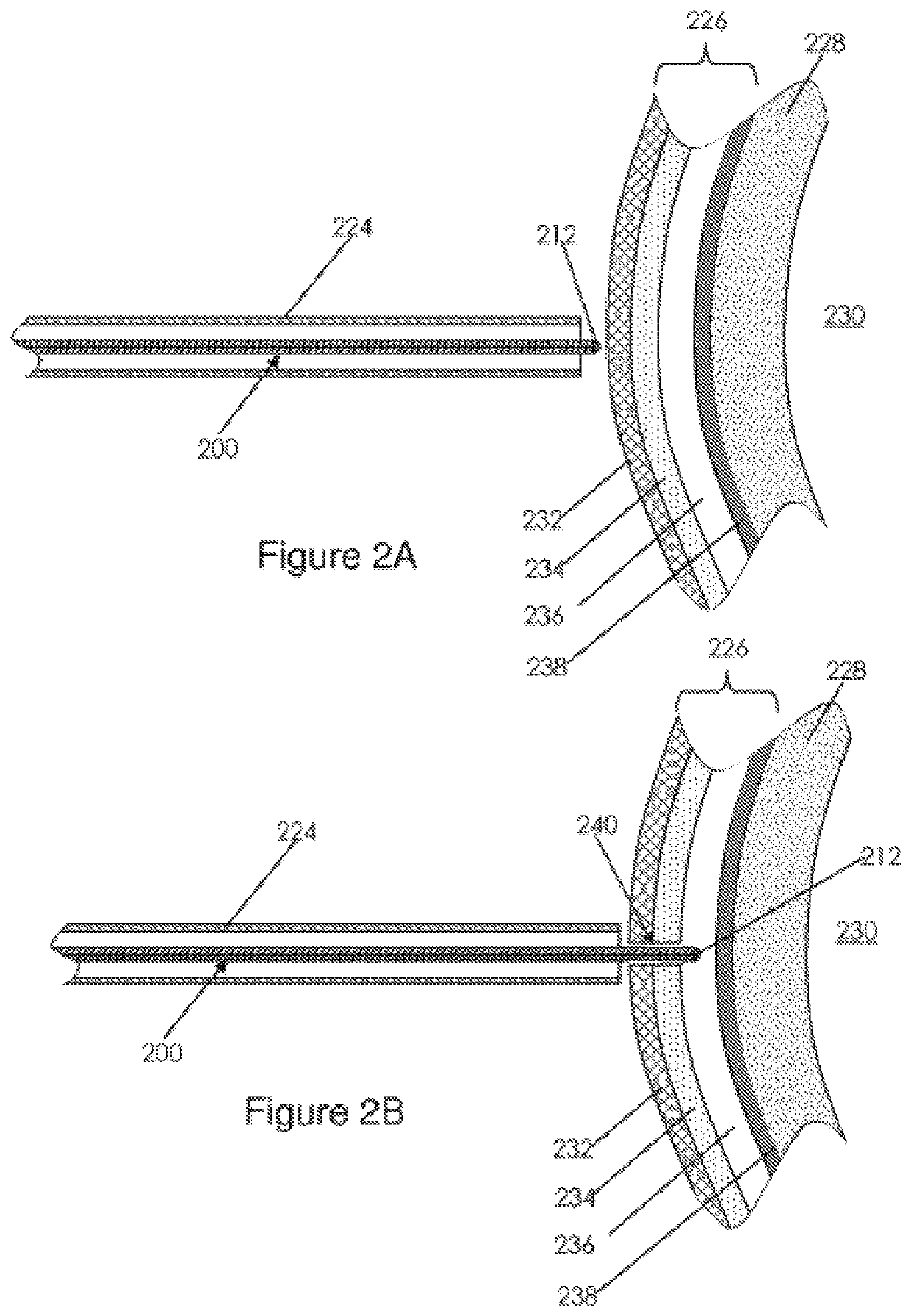Electrosurgical Pericardial Puncture
a technology of pericardial puncture and electrosurgical technique, which is applied in the field of electrosurgical pericardial puncture, can solve the problems of laceration of the myocardium, increased risk, and associated risks, and achieve the effect of reducing the risk of damaging the myocardium layer
- Summary
- Abstract
- Description
- Claims
- Application Information
AI Technical Summary
Benefits of technology
Problems solved by technology
Method used
Image
Examples
Embodiment Construction
[0026]To gain access to the pericardial cavity for performing treatment procedures, such as catheter mapping and ablation, prior art devices typically comprise needles or other traumatic puncturing members that may cause damage to the myocardium when advanced towards the heart.
[0027]The present inventors have discovered a method which provides for safely accessing the pericardial cavity of the heart of a human or animal while minimizing the risk to the heart wall. Various embodiments of the method avoid the use of rigid piercing members and the associated risks.
[0028]The method includes advancing a puncture device towards the heart of a patient. The distal end of the puncture device is atraumatic and comprises an energy delivery device. The energy delivery device is positioned at a target site on a pericardium of the heart and energy is delivered from the energy delivery device to a tissue to create a channel to the pericardial cavity. The atraumatic distal end is blunt (not narrow ...
PUM
 Login to View More
Login to View More Abstract
Description
Claims
Application Information
 Login to View More
Login to View More - R&D
- Intellectual Property
- Life Sciences
- Materials
- Tech Scout
- Unparalleled Data Quality
- Higher Quality Content
- 60% Fewer Hallucinations
Browse by: Latest US Patents, China's latest patents, Technical Efficacy Thesaurus, Application Domain, Technology Topic, Popular Technical Reports.
© 2025 PatSnap. All rights reserved.Legal|Privacy policy|Modern Slavery Act Transparency Statement|Sitemap|About US| Contact US: help@patsnap.com



